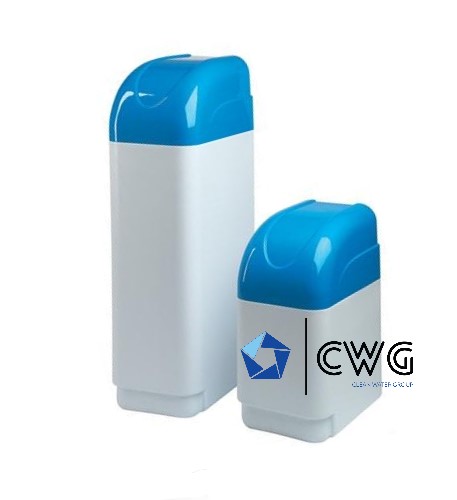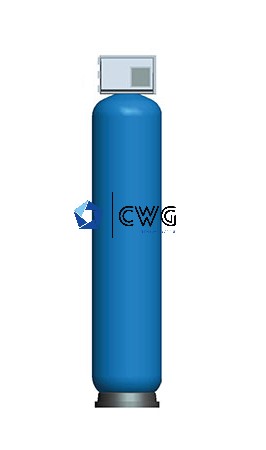... water and just water...
HOME > LIVING
Health and safety has never been more important than it is today.
Our daily choices affect the well-being of our family and our environment. When we think about key aspects of a healthy lifestyle, clean water is certainly at the top of the priority list.
Given the fact that water is an essential resource that we use to drink, prepare food and maintain hygiene, it is very important to ensure that the water we consume and use in everyday activities is correct and clean.
Our site is dedicated to household water filtration to present you all the benefits and solutions we bring to your home and your family.
HARD WATER – LIMESCALE IN WATER
We describe water as hard if it contains a lot of dissolved salts, especially calcium and magnesium. Hard water affects our health, and is harmful because it causes the formation of limescale deposits on pipes and heating systems, and in relation to soft water reduces the effect of washing soap and detergents.
What can be done?
Soft-VAK water softeners are the solution for you.



The softener works on the principle of ion exchange, calcium and magnesium are replaced with sodium. Softeners of removal and small amounts of other cations such as copper, iron or zinc and with just one device solved the problem of scale for the entire household (faucets, bathrooms, kitchens, water heaters, washing machines, dishwashers, coffee machines, hydromassage baths…).
Why it is advisable to soften your water:
1. Saving on costs (maintenance, energy products..)
2. Savingon on detergents
3. Time savings ( which you have to spend cleaning and scrubbing..)
4. Protecting your family’s health (preventing bacteria and viruses)
Numerous studies and analyses have proven that problems with calculus greatly increase costs and create unpleasant consequences on household appliances and household appliances. Each 1mm deposit of limescale on your pipelines, heaters (water heaters, washing machines or dishwashers … ) increases energy consumption by up to 15 % ! ! !
Treated and softened water reduces the consumption of detergents, fabric softeners, various descaling detergents, prevents the reproduction of bacteria……. etc.
SMELL AND TASTE OF WATER
The smell and taste of water plays an important role in the perception of its quality and safety for drinking. These factors can be the result of natural processes, biological activities or human activities.
It is worth noting that the smell and taste of water are not always an indication of unsuitability for drinking. Sometimes mild smells or flavors are the result of natural processes and do not pose a threat to health. However, if you notice a sudden and strong smell or taste of water, especially if it changes from the usual, it is recommended to check the composition of the water and consult professionals about the solutions
What can affect the smell and taste of water:
Organicmatter: The presence of organic substances, such as rotting leaves, algae and microorganisms, can give water an earthy or rotten smell and taste. These compounds can also react with chlorine, which is often used to disinfect water, creating byproducts that affect odor and taste.
Chlorination: Chlorine is often added to disinfectant water to kill harmful bacteria and microorganisms. However, reactions between chlorine and organic matter can create chlorine byproducts that give the water a pungent or chemical smell and taste.
Bacterial activities: Bacterial metabolism and the activity of microorganisms in water can produce various gases and compounds that affect smell and taste. These may include water-sulfur compounds that give off a rotten or eggy smell, or organic compounds that give off a mild moldy smell.
Metal joints: The presence of certain metals, such as iron, manganese and copper, in water can cause a metallic odor and taste. These metals can come from natural sources such as rocks or from human activities such as corroding metal pipelines.
Nutrients: High concentrations of nitrogen and phosphorus in water can promote the rapid growth of algae and phytoplankton. This excessive presence can create algae that produce odors and compounds that give the water a specific smell and taste.
Industrial by-products and pollution: Pollution from industry or human activities, such as the release of chemicals or waste into the water, can cause unnatural odors and flavors.






IRON IN WATER
The presence of iron and manganese in water can have a significant impact on its quality, color, smell and taste.
These metals are present in natural habitats and can often be found in groundwater, but they can also come from human activities, such as industrial processes or corroding metal pipelines.
What affects the appearance of iron and manganese in water:
IRON:
Natural presence: Iron is a common element present in earth and rocks and can dissolve into water from surrounding soils. When groundwater passes through rocks containing iron minerals, it can melt iron compounds and bring them into watercourses or water supply systems.
Pipeline corrosion: In older plumbing systems that use metal pipes, corrosion inside the pipe can release iron into water. This process can further enhance the presence of iron.
Water color: The presence of iron in the water can cause the appearance of brown to red color, especially after exposure to air. This phenomenon is called iron corrosion.
Impact on health: In low concentrations, iron is not usually harmful to human health, but excessive presence can affect the taste of water and cause the deposition of iron deposits in pipes and devices.
MANGANESE:
Natural presence: Manganese compounds are also present in soil and rocks and can pass into groundwater. Similar to iron, the presence of manganese can increase when groundwater passes through manganese-rich rocks.
Water color: Manganese compounds can cause a brown or black color of water. This color change is often visible in plumbing and appliances such as taps and sinks.
Impact on health: Manganese compounds, such as iron, in low concentrations are usually not harmful to human health. However, in high concentrations, the accumulation of manganese in the body is possible, which can cause health problems.
To reduce the appearance of iron and manganese in water, various methods of water treatment are often used. Filtration, oxidation and the use of specific chemical compounds can help remove these metals from water, thereby improving its quality, color and smell. It is important to monitor and test water quality to ensure that concentrations of these metals are within acceptable limits, which is essential to ensuring safe and tasty drinking water.






MICROORGANISMS AND BACTERIA
Microorganisms and bacteria play an important role in water ecosystems, but they can also pose a risk to human health if not controlled or removed from water sources.
Here is an overview of their role, impact and importance in water:
Microorganisms in water:
Phytoplankton: These are microscopic marine organisms that perform photosynthesis and form the basis of marine food chains. Phytoplankton release oxygen and play a key role in maintaining the balance of oxygen and nutrients in the water.
Zooplankton: These are microscopic animal organisms that feed on phytoplankton and other tiny organisms. They also play a key role in the nutrition of many larger organisms in aquatic ecosystems.
Bacteria: Bacteria are microscopic unicellular organisms present in water. Some of them are beneficial to the aquatic ecosystem because they participate in processes such as organic matter decomposition and nutrient cycling.
Viruses: Aquatic ecosystems also contain viruses that can affect different organisms. Some viruses infect bacteria and help keep their population under control.
The impact of microorganisms and bacteria on the health of water and people:
Water pollution: If water is contaminated with impurities, waste or chemical substances, it can result in excessive growth of bacteria and microorganisms. This can lead to degradation of water quality and reduction of biodiversity.
Diseases: The presence of pathogenic (disease-causing) bacteria, viruses and other microorganisms in water can pose a serious risk to human health. Drinking contaminated water can lead to various illnesses, including digestive disorders and other infections.
Control of microorganisms and bacteria:
Filtration: Filtration techniques are used to physically remove microorganisms from the water. Filters can be mechanical (e.g. sieves) or chemical (e.g. activated carbon).
Disinfection: In water systems, disinfection is often performed by adding chemical disinfectants such as chlorine or ultraviolet light to kill pathogenic bacteria and microorganisms.
Natural processes: Microorganisms present in natural water bodies also participate in the decomposition of organic matter and the maintenance of ecosystems.
Control and monitoring of microorganisms and bacteria in water is of crucial importance to ensure the safety of drinking water and preserve the natural balance of aquatic ecosystems.






